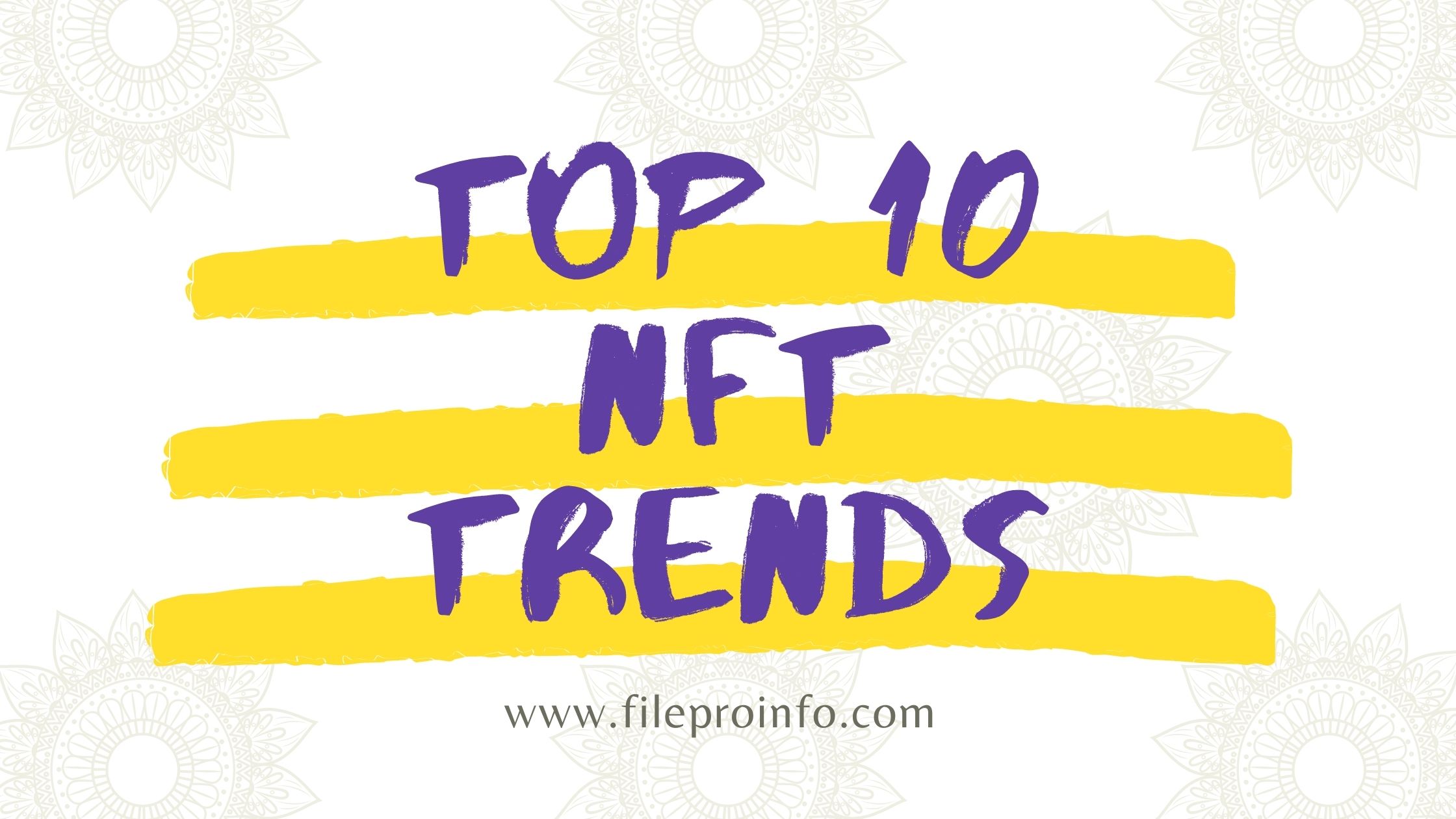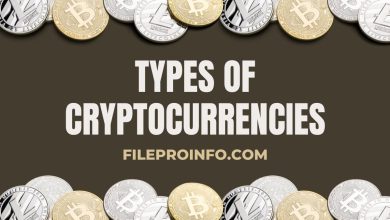
There is a new way of doing things emerging in the world. It’s not just one thing but an entire movement that is changing how we interact with physical goods and, more importantly, what they cost. It seems like every day, there are new developments in this field of innovation, and here are 10 NFT trends that have been popping up recently.
1) AR/VR integration for Improved Shopping Experience
This is one of the most exciting applications for NFTs. Combining the digital and physical worlds to create unique shopping experiences that are more engaging and realistic.
For example, imagine being able to try on clothes in a virtual dressing room or view furniture in your home before you buy it. The possibilities are endless!
“Some companies are already experimenting with this technology, like Ikea who has released an app that allows you to place furniture in your home using augmented reality. This is just the beginning for AR/VR and NFTs, and we can expect to see a lot more innovation in this area in the future,” explains Sarah Duncan, a tech blogger at Ukwritings.com.
2) Digitizing assets on the Blockchain
One of the most obvious applications for NFTs is digitizing assets and putting them on the blockchain. This allows for greater security and transparency as well as easier ownership transfers.
Some companies that are doing this include Rare Bits, which allows users to buy, sell, and trade digital assets, and BitShares, which allows users to create and trade digital assets called SmartCoins.
We can expect to see a lot more of this in the future as more and more people realize the benefits of digitizing their assets.
Items that can be stored and noted on the blockchain in this way include things like
- Tickets for events or concerts
- Vouchers or coupons
- Digital art or collectibles
- Cryptocurrencies
- Data (e.g., medical records, voting data, etc.)
3) 3D printing at home to create custom goods
Another exciting application for NFTs is using them to create custom goods. This can be done with a variety of different printing methods, including but not limited to:
- Stereolithography (SLA)
- Selective Laser Sintering (SLS)
- Fused Deposition Modeling (FDM)
Some companies that are doing this include Shapeways and Sculpteo.
We can expect to see a lot more of this in the future as people become more comfortable with using digital fabrication methods to create their custom goods, and indeed as the technology evolves.
For example, right now, there are a lot of limitations with what can be printed since most printers use plastic filament, which is not very strong. But as materials science advances, we may start seeing stronger and more durable materials being used for printing, making it possible to print things like eyeglasses, tools, and even replacement body parts!
NFTs work in this case because they allow for the creation of unique goods that are specifically tailored to the needs and desires of the individual, and you can ensure the item you’re printing is the official item you were hoping to print.
4) NFT Avatar Casting
One of the most interesting applications for NFTs is avatar casting. This is where you create a digital representation of yourself or someone else that can be used in various online applications.
This could be used for things like social media, gaming, or even voting. Some companies that are doing this include Decentraland and Akasha.
We can expect to see a lot more of this in the future as people become more comfortable with using digital representations of themselves, even more so with technologies like social media and VR becoming ever more integrated into society.
For example, imagine being able to create a digital representation of yourself that could be used in VR applications, but also linking it with the blockchain so your avatar can be used by you and only you, ensuring your identity while online.
5) Community Owned Branding NFTs
Another interesting application for NFTs is community-owned branding. This is where a community comes together to create a brand that represents them and their values.
This is happening with things like city flags, which are being replaced with community-owned versions that better reflect the people’s values.
We can expect to see more of this in the future as communities become more interested in having their brands and representation. This could also be used for things like fashion, food, or even art. Some companies that are doing this include DAOstack and OriginTrail.
We can expect to see a lot more of this in the future as people become more interested in using collective branding to represent their communities and values. This could be used for things like clothing, food, or even housing. Some companies that are doing this include Blockparty and Bitmark.
6) NFT Gaming
One of the most exciting applications for NFTs is in gaming. Gaming is huge right now, and it’s only set to grow over the coming years, meaning this is such an ample space to get involved with. What makes gaming-based NFTS so interesting is that they offer several advantages over traditional game assets, such as:
- Easier ownership transfer between players
- More secure than traditional ways of storing items
- Can be used to create unique and customized experiences
Imagine rare in-game items on game servers like World of Warcraft or Runescape. You could have rare items registered on the blockchain under a player’s name, meaning other players can correctly identify who the item owner is and who it’s officially registered to, meaning that players can protect themselves from scams when players try selling fake items.
7) NFT Streaming
One of the more interesting applications for NFTs is in streaming. This is where you can use NFTs to represent various aspects of your life, such as your favorite movies, books, or TV shows.
This could be used to create a more personalized streaming experience with unique content that is tailored specifically for you. This works by using NFTs to represent the various media that you consume. For example, you could have a movie NFT that is registered on the blockchain and linked to your account. This would allow you to watch the movie directly from within the streaming platform without having to download it first.
Some companies that are doing this include Viewly and PopChest, but there will certainly be more in the future once people start becoming more familiarised with the technology.
8) NFT Ticketing
One of the more interesting applications for NFTs is ticketing. This is where you can use NFTs to represent various aspects of your life, such as your favorite movies, books, or TV shows.
This could be used to create a more personalized streaming experience with unique content that is tailored specifically for you. This is a great idea since it could help to reduce ticket fraud and make the process of buying tickets much more secure.
Some companies that are doing this include TicketChain and Aventus.
9) NFT Credit Cards
One of the more interesting applications for NFTs is credit cards. For example, you could have a credit card that is registered on the blockchain and linked to your account. This would allow you to make purchases with your credit card without having to worry about your information being stolen or compromised.
Some companies that are doing this include Monaco and Tokencard. Some of the benefits of this include:
- No need to carry around your credit card information
- Easier to keep track of your spending
- It can be used for online and offline purchases
This is a great idea since it could help to reduce credit card fraud and make the process of using a credit card much more secure. It’s also great for people who want to easily keep track of their spending. What’s more, you can use your NFT credit card for online and offline purchases.
10) NFT Art
To finish off with, I want to explore one of the more interesting applications for NFTs is in art. This is perhaps the most popular form of NFT right now because it’s possible to make so much money investing in certain art pieces if you know what you’re doing.
How this works is by using NFTs to represent the various pieces of art that you own. This could be anything from paintings to sculptures. What’s great about this is that it allows you to track and keep an inventory of all your different pieces of art. You can also use it to create a digital portfolio of your work that you can show off to others.
Since everything is registered on the blockchain, it’s also possible to create a permanent record of your art pieces. This is great for artists who want to make sure that their work is properly documented and protected.
Some companies that are doing this include Maecenas, DADA, and Verisart. Some of the benefits of this include:
- Can be used to create a digital portfolio of your work
- A permanent record of your art pieces with a solid confirmation of your ownership
- Protects your artwork from being stolen or copied
This is a great way to show off your work to others and make sure that it’s properly documented and protected. It’s also great for artists who want to sell their work in the future.





3 Comments